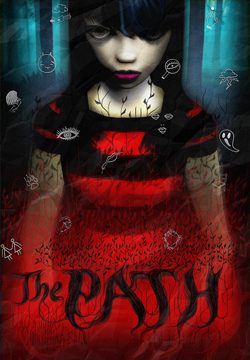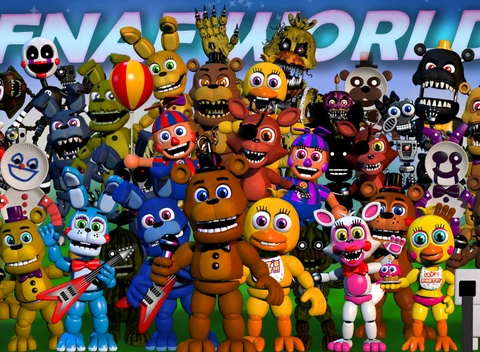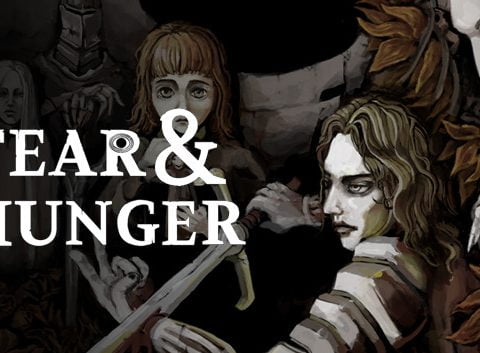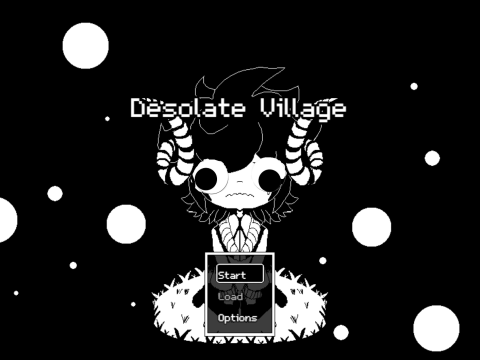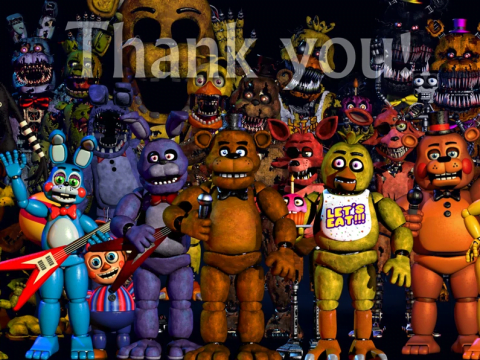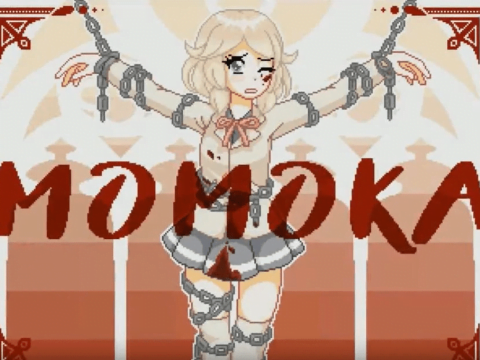
The History Of World of Horror
World of Horror is an early-access turn-based RPG created by Panstazs but published under Ysbryd Games on the 20th of February 2020. The game started by being released as a free demo on Panstazs’ Itch.io page, before releasing a full version that you can pay for on both the aforementioned Itch.io page and Steam for under 20 pounds (side note, the Steam port is the cheaper option if that’s a concern for you).
Gameplay Part 1: Investigations And The Elder Gods
World of Horror’s main gameplay is the mysteries your character has chosen to solve. Once you boot up your first playthrough, you will be greeted by five randomly chosen mysteries from a pool of seventeen. Each mystery has its own content, endings, and (in some cases) boss fights.
You can complete the cases in whatever order you want, however, solving more difficult mysteries first can lead to a better or worse late game depending on how lucky you got, so be mindful.
Once you select your mystery, then you will begin an investigation segment. These mainly consist of clicking on the areas the game wants you to investigate and responding to whatever event your character seems to find themselves in. For example, it could be as simple as meeting up with an old friend in which case you can either recover some lost reason (your sanity meter for the game) or gain experience (just regular old RPG experience) at the cost of one reason.
Backtracking a little, your character has two main stats that can directly end your run, stamina, and reason. Stamina is your health for the game. Meanwhile, as mentioned above, reason is your sanity meter, run out of either and the entire run is dead. Other stats your character will have are strength, dexterity, perception, knowledge, charisma, and luck.
Most of these stats don’t affect much outside of skill checks and what weapons your character can use more efficiently, that’s not to say they’re useless, however, as, near the end of the game, they are essential in order to defeat the elder god that’s attempting to attack your town.
Speaking of Elder Gods. They’re your main enemy. And OH BOY. Do they hate humanity. Now, along with the aforementioned stamina and reason, you also have a doom meter! Horray! And in case you thought doom was just there to be creepy, you’d be wrong. Doom is essentially your time limit for the game. If that counter hits 100%, you’re dead. Most of your actions revolve around doom, everytime you investigate an area, go buy something in one of the shops, rest in your home before the end of a mystery, or even certain events, the doom meter will go up.
After each mystery, the Elder Gods will cause an event to occur around town, these range from no longer being able to watch the TV (which unless your trying to get one certain achievement then is kinda useless anyway), or having it so that enemies gain 20 power (meaning you have a less likely chance of hitting them in combat.) Speaking of combat.
Gameplay Part 2: Combat
Occasionally, while investigating, you will find yourself in a battle with one of the many abominations this game has to offer. From ghosts to apartment stalkers, even fax machines are out to get you. Once you enter combat, you are given a few options as to what to do. The main ones I will touch on are ghosts and non-ghosts.
The difference between the two is that non-ghosts are able to be damaged normally, meanwhile, ghosts aren’t capable of being damaged normally. (Shocker I know). For the sake of this article, let’s go over normal enemies first. Now, enemies are classed into a bunch of different types. However, for the sake of not making this article as long as Pokemon Arceus, we will only look at ghosts and every other class.
In general, enemies can do four types of damage, stamina damage, reason damage, both stamina and reason damage at the same time, and doom damage. Yep, on top of all the ways doom can be raised, enemies can also raise doom just by attacking you. Welp, time to throw in the towel right? Actually no.
Each enemy is assigned a type of damage and fixed damage rate, for example, the Apartment stalker does 2 stamina damage for every hit they manage to get off, meanwhile, the magician only adds plus 1 doom for every hit he manages to hit. On top of this, enemies also have specific weaknesses based on type, for example, plant enemies are weak to fire, and human enemies are weak to blunt weapons.
Speaking of weapons, if you find yourself in a pinch and need to do quick damage, you can either kick the enemy without a weapon, or you can use your turn to find a weapon. Sometimes both if you’re fast enough. What do I mean by that? Well, combat is turn-based, meaning you go and then the enemy goes. The only difference here is that you have an action bar. Every action you take during your turn fills up the bar, and you can do mostly whatever you want as long as it fits in the bar.
For example, if your character can manage it, you could find a weapon and deal damage at the same time all during one turn. However, that’s only if it can all fit into the action bar. Going back to ghost enemies, as mentioned, they cannot be hit through normal means, instead, you must either make them serve their time in our world, which counts as a unique attack only for ghosts, leave an offering, or do the correct amount of bows and claps to instantly eliminate the ghosts day.
But what happens if things get too dicey? Well, unless it’s a boss fight or the magician, you can choose the cowardly way and run away. For a doom penalty. Of about 5%. Unless you use a character-specific level-up perk that reduces this penalty to 3%.
Gameplay Part 3: Spells, Allies and Perks.
In World of Horror, characters are given access to the wonderful power of magic. Unfortunately, I personally find spells to be far too high-risk low reward, as in trading stamina or reason for low amounts of free damage, though some are pretty good, so do excuse the fact that I cannot speak from personal experience for this first half.
Spells are labelled under several different categories. But to keep things simple, we will be grouping them under three different categories: combat spells, support spells, and rituals.
Combat spells are what they say on the tin, they can only be used in combat and often force you to give up stamina or reason for some extra damage or taking less damage. Like I said, it’s a bit too high-risk low reward for me, even if it is essentially free damage.
Support spells are where spells shine. These spells are focused on giving you buffs and regained stats. For example, memory extract allows you to recover two reason just at the cost of 10 exp, which is a huge asset for a spell to have.
Rituals are like that awkward teenager phase everyone goes through. They’ll do things for you, but only if certain conditions are met first. For example, by defeating Something Truly Evil (A fight I may talk about another day) you unlock Witness Curse. A ritual in which all stamina damage taken transfers into doom damage at the cost of two reasons. While great for a character like Miku, for others it may just be a detriment, especially if you struggle to keep your doom meter low.
Allies can be obtained in a number of ways, either by recruiting them from the school, doing certain events or playing the eels’ mystery and choosing to save Kanna. Allies each have their own unique buffs (or debuffs if you get unlucky) for example, Kanna makes it so that you take one less damage from enemies in combat, or to put it another way, if an enemy does two stamina damage normally, having Kanna there would mean they only do one stamina damage.
If you feel like an ally is only being a detriment, or you want another ally that’s better, you can simply choose to let said ally go freeing up a slot for another ally to take their place. Allies aren’t just there to follow you around, either. In combat, you can tell an ally to distract an enemy, which either leads to their death or the enemy gets a permanent power debuff. You can also send an ally to attack an enemy, but this has a 100% chance of killing them, meaning often it’s better to not bother at all.
Perks are exactly what they sound like. They are buffs your character gets whenever they level up. These range from general perks that every character can use, to character-specific perks that only your character can use on a normal run. These range from shop items being cheaper to new outcomes unlocking due to what you pick. For example, if you have the outdoorsmen perk, you have the ability to unlock Moriko, a new character who has a gun. Yup. A gun. On top of perks, levelling up also grants you stat increases. You can either increase your stamina and reason or give yourself a permanent boost to one of the other stats.
Gameplay Part 4: Injuries and curses
Now if you thought everything I’ve mentioned up until now sounded bad, don’t worry, it gets worse. Since we can’t have nice things, enemies can give you injuries (and in rare cases, curses), which can stack. Some of these injuries aren’t bad, for example, tiny cuts dose literally nothing, and getting a broken jaw which disallows you to use spells.
However, certain other injuries are incredibly painful to deal with. For example, getting the swollen joint disallows you to run from combat, and a mangled hand makes it so that every offensive action done in combat equals one stamina damage to your character.
Injuries are also partitioned off into major and minor injuries, minor injuries can be treated by the school nurse or treated by the doctor for one fund, however, major injuries require you to go to the doctor and spend at least two funds to fix it.
Curses are by far much more annoying to deal with, as expected from a supernatural injury. They cannot be fixed via modern medicine. Some characters start with curses already equipped, for example, Haru has the curse of nicotine rush, allowing him to do more damage in combat as long as he has a pack of cigarettes available.
Now, as expected from curses, they are incredibly hard to remove but incredibly easy to obtain and once obtained, they are a nightmare. For example, paranoia and suicidal both make it so that whenever you take reason or stamina damage respectively, there is a small chance that you will stamina or reason damage as well, essentially turning all boss fights into walking mind-fields of doom, especially if you have both at the same time.
Visuals And Soundtrack
Okay, that’s the entire gameplay out of the way, now onto the visuals. They look great.
While some may dispute this as the game looks like an old 64-bit windows XP game, that’s what makes it so good. World of Horror has pixilated visuals that add to the unsettling nature of the game. Often, well-made 3d horror games aren’t as nerve-wracking because they’re so well-done that it’s often distracting from the horror.
World of Horror looks like a game that belongs on an old Nintendo 64, which ironically makes the game scarier than if it were to have full 3d visuals.
The soundtrack also helps to keep up the atmosphere of the game. While the soundtrack isn’t breaking any top-ten lists, it still serves its purpose and fits the mood of each area shockingly well. With harsh arpeggios for combat and life-support sounding effects for Curious Case of a Contagious Coma as most of that case takes place in the town hospital.
Conclusion
There was a lot more I wanted to talk about. (Including Overworldy Thirst. Yes, that achievement), but that would have shot the pacing of the article, so my pet peeve of achievements will have to wait. Sorry, Yashiro.
